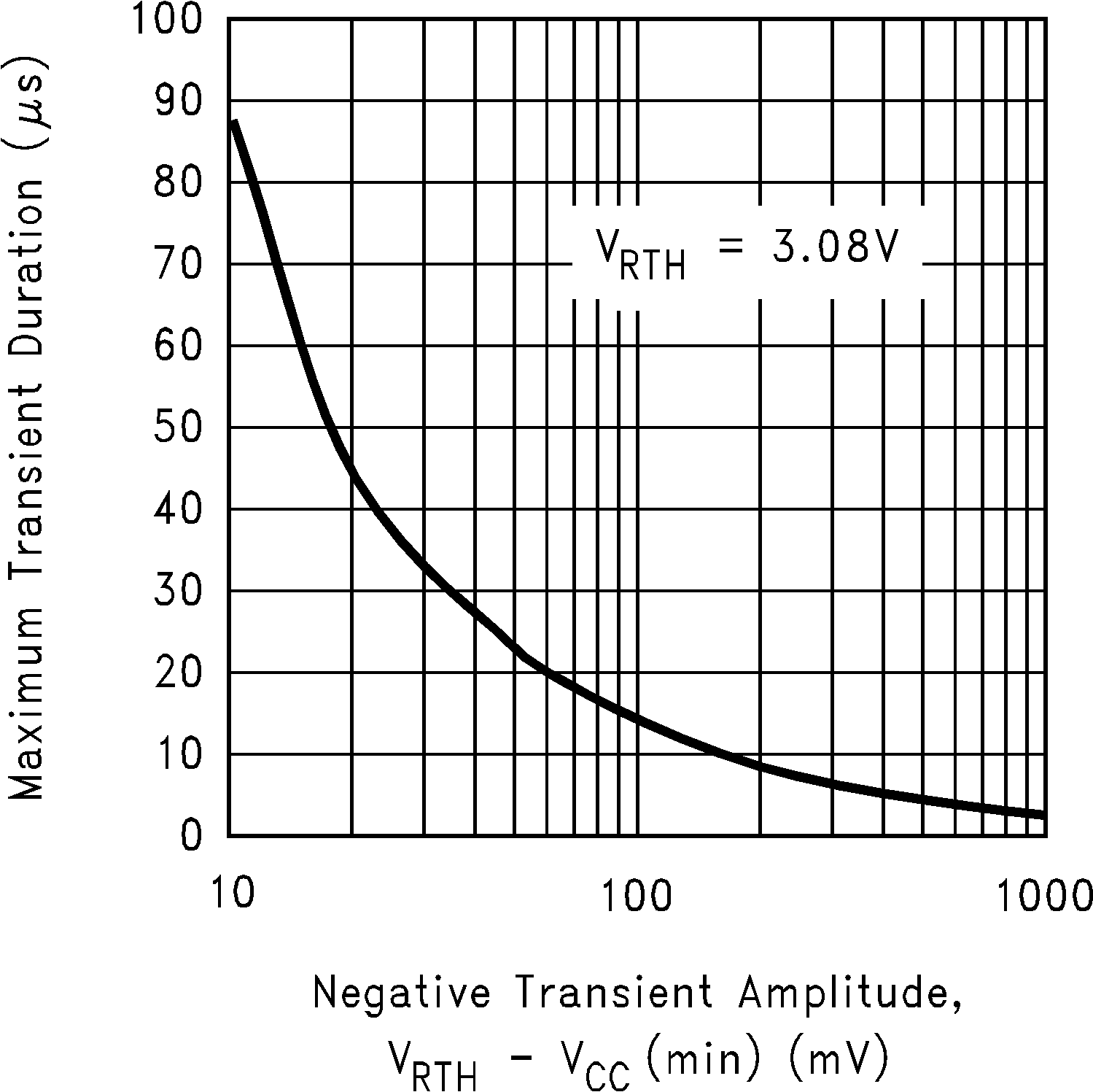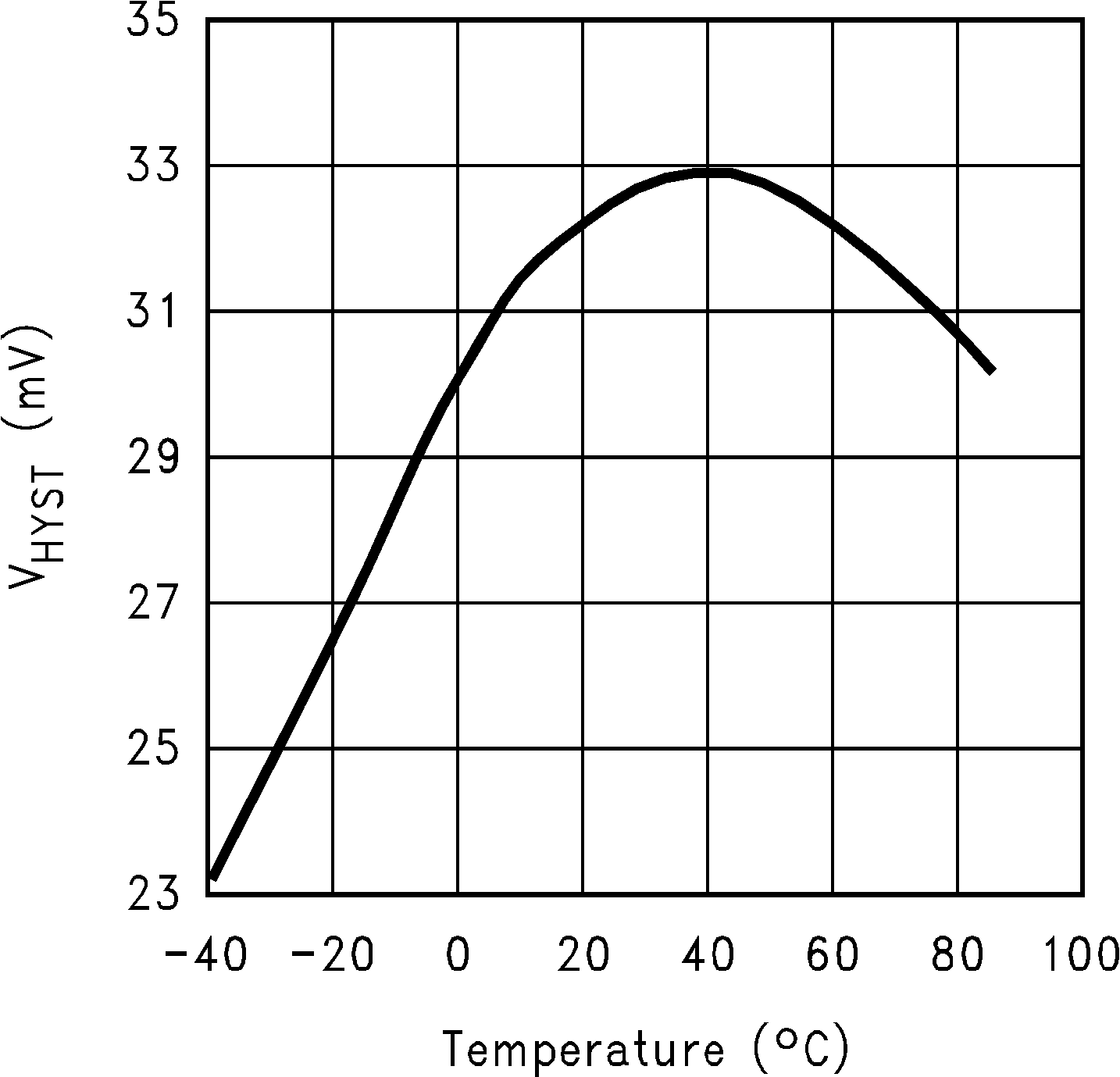SNVS003G June 1999 – April 2016 LP3470
PRODUCTION DATA.
- 1 Features
- 2 Applications
- 3 Description
- 4 Revision History
- 5 Pin Configuration and Functions
- 6 Specifications
- 7 Detailed Description
- 8 Application and Implementation
- 9 Power Supply Recommendations
- 10Layout
- 11Device and Documentation Support
- 12Mechanical, Packaging, and Orderable Information
Package Options
Mechanical Data (Package|Pins)
- DBV|5
Thermal pad, mechanical data (Package|Pins)
Orderable Information
6 Specifications
6.1 Absolute Maximum Ratings
over operating free-air temperature range (unless otherwise noted)(1)(2)| MIN | MAX | UNIT | |
|---|---|---|---|
| VCC voltage | –0.3 | 6 | V |
| Reset voltage | –0.3 | 6 | V |
| Output current (Reset) | 10 | mA | |
| Power dissipation (TA = 25°C)(3) | 300 | mW | |
| Lead temperature (soldering, 5 sec) | 260 | °C | |
| Junction temperature, TJMAX | 125 | °C | |
| Storage temperature, Tstg | –65 | 150 | °C |
(1) Stresses beyond those listed under Absolute Maximum Ratings may cause permanent damage to the device. These are stress ratings only, which do not imply functional operation of the device at these or any other conditions beyond those indicated under Recommended Operating Conditions. Exposure to absolute-maximum-rated conditions for extended periods may affect device reliability.
(2) If Military/Aerospace specified devices are required, please contact the Texas Instruments Sales Office/Distributors for availability and specifications.
(3) The maximum power dissipation must be derated at elevated temperatures and is dictated by TJmax (maximum junction temperature), θJA (junction to ambient thermal resistance), and TA (ambient temperature). The maximum allowable power dissipation at any temperature is PDmax = (TJmax − TA)/ θJA or the number given in the Absolute Maximum Ratings, whichever is lower.
6.2 ESD Ratings
| VALUE | UNIT | |||
|---|---|---|---|---|
| V(ESD) | Electrostatic discharge | Human-body model (HBM), per ANSI/ESDA/JEDEC JS-001(1) | ±2000 | V |
| Charged-device model (CDM), per JEDEC specification JESD22-C101(2) | ±200 | |||
(1) JEDEC document JEP155 states that 500-V HBM allows safe manufacturing with a standard ESD control process.
(2) JEDEC document JEP157 states that 250-V CDM allows safe manufacturing with a standard ESD control process.
6.3 Recommended Operating Conditions
over operating free-air temperature range (unless otherwise noted)| MIN | NOM | MAX | UNIT | |||
|---|---|---|---|---|---|---|
| VCC | Operating voltage | 0.5 | 5.5 | V | ||
| TA | Operating temperature | LP3470 | –20 | 85 | °C | |
| LP3470I | –40 | 85 | ||||
6.4 Thermal Information
| THERMAL METRIC(1) | LP3470 | UNIT | |
|---|---|---|---|
| DBV (SOT-23) | |||
| 5 PINS | |||
| RθJA | Junction-to-ambient thermal resistance | 171 | °C/W |
| RθJC(top) | Junction-to-case (top) thermal resistance | 124.8 | °C/W |
| RθJB | Junction-to-board thermal resistance | 30.9 | °C/W |
| ψJT | Junction-to-top characterization parameter | 17.9 | °C/W |
| ψJB | Junction-to-board characterization parameter | 30.4 | °C/W |
| RθJC(bot) | Junction-to-case (bottom) thermal resistance | — | °C/W |
(1) For more information about traditional and new thermal metrics, see the Semiconductor and IC Package Thermal Metrics application report, SPRA953.
6.5 Electrical Characteristics
Limits and typical numbers are for TJ = 25°C, and VCC = 2.4 V to 5 V (unless otherwise noted)| PARAMETER | TEST CONDITIONS | MIN(1) | TYP(2) | MAX(1) | UNIT | ||
|---|---|---|---|---|---|---|---|
| VCC | Operating voltage | TJ = –20°C to 85°C | 0.5 | 5.5 | V | ||
| ICC | VCC supply current | VCC = 4.5 V | TJ = 25°C | 16 | µA | ||
| TJ = –20°C to 85°C | 30 | ||||||
| VRTH | Reset threshold voltage | LP3470 | 0.99 × VRTH | VRTH | 1.01 × VRTH | V | |
| LP3470I | TJ = 25°C | 0.99 × VRTH | VRTH | 1.01 × VRTH | |||
| TJ = –40°C to 85°C | 0.985 × VRTH | 1.015 × VRTH | |||||
| VHYST | Hysteresis voltage(3) | TJ = 25°C | 35 | mV | |||
| TJ = –20°C to 85°C | 15 | 65 | |||||
| tPD | VCC to reset delay | VCC falling at 1 mV/µs | TJ = 25°C | 100 | µs | ||
| TJ = –20°C to 85°C | 300 | ||||||
| tRP | Reset time-out period(4) | C1 = 1 nF | TJ = 25°C | 2 | ms | ||
| TJ = –20°C to 85°C | 1 | 3.5 | |||||
| VOL | Reset output voltage low | VCC = 0.5 V, IOL = 30 µA, TJ = –20°C to 85°C | 0.1 | V | |||
| VCC = 1 V, IOL = 100 µA, TJ = –20°C to 85°C | 0.1 | ||||||
| VCC =VRTH − 100 mV, IOL = 4 mA, TJ = –20°C to 85°C |
0.4 | ||||||
| R1 | External pullup resistor | 0.68 | 20 | 68 | kΩ | ||
| ILEAK | Reset output leakage current | TJ = 25°C | 0.15 | 1 | µA | ||
| TJ = –20°C to 85°C | 6 | ||||||
(1) Minimum and maximum limits in standard typeface are 100% production tested at 25°C. Minimum and maximum limits in full operating temperature range are ensured through correlation using Statistical Quality Control (SQC) methods. The limits are used to calculate TI's Average Outgoing Quality Level (AOQL).
(2) Typical numbers are at 25°C and represent the most likely parametric norm.
(3) VHYST affects the relation between VCC and Reset as shown in the timing diagram.
(4) tRP is programmable by varying the value of the external capacitor (C1) connected to pin SRT. The equation is: tRP = 2000 × C1 (C1 in µF and tRP in ms).
6.6 Typical Characteristics
at TA = 25°C (unless otherwise noted)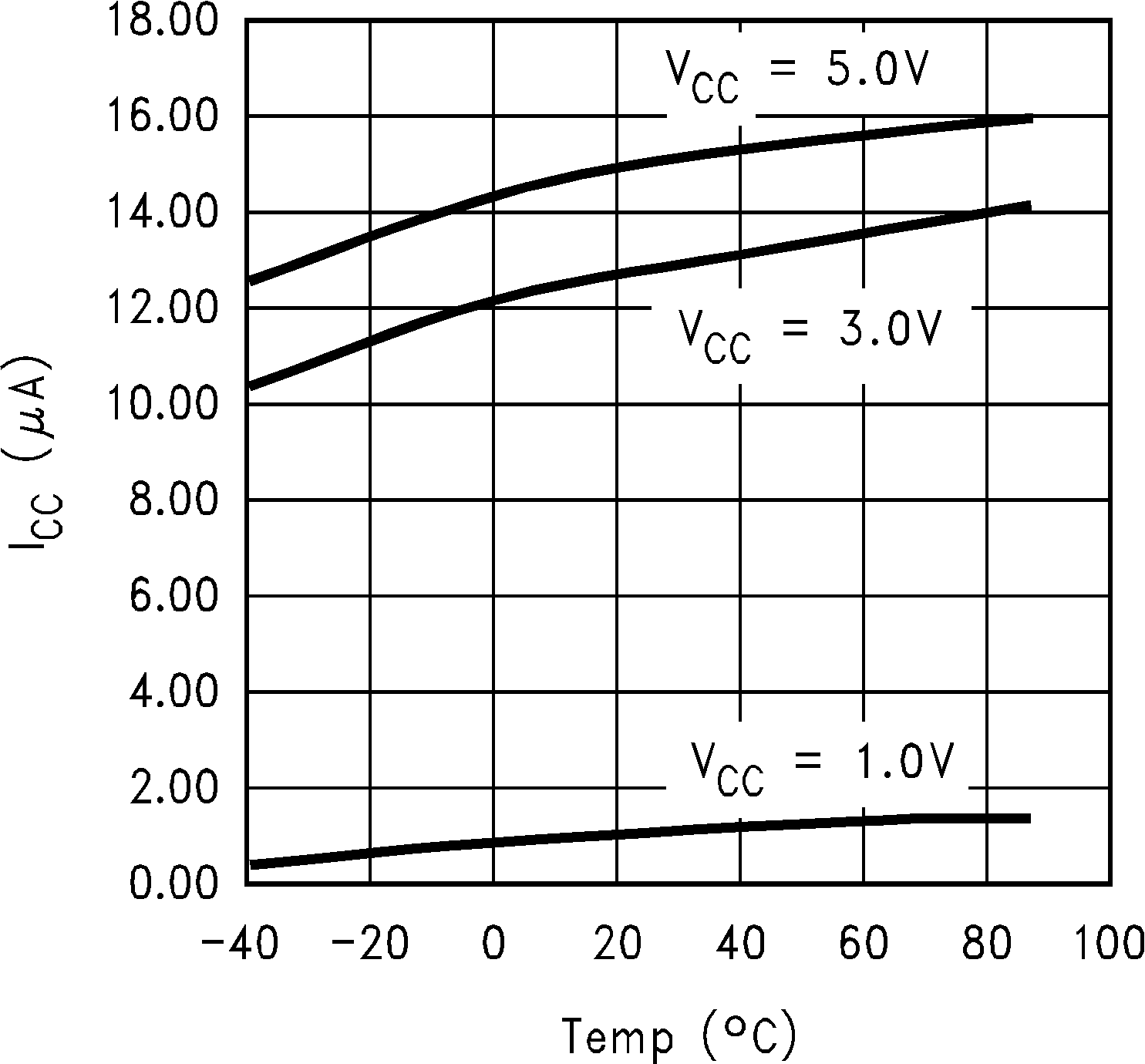 Figure 1. ICC vs Temperature
Figure 1. ICC vs Temperature
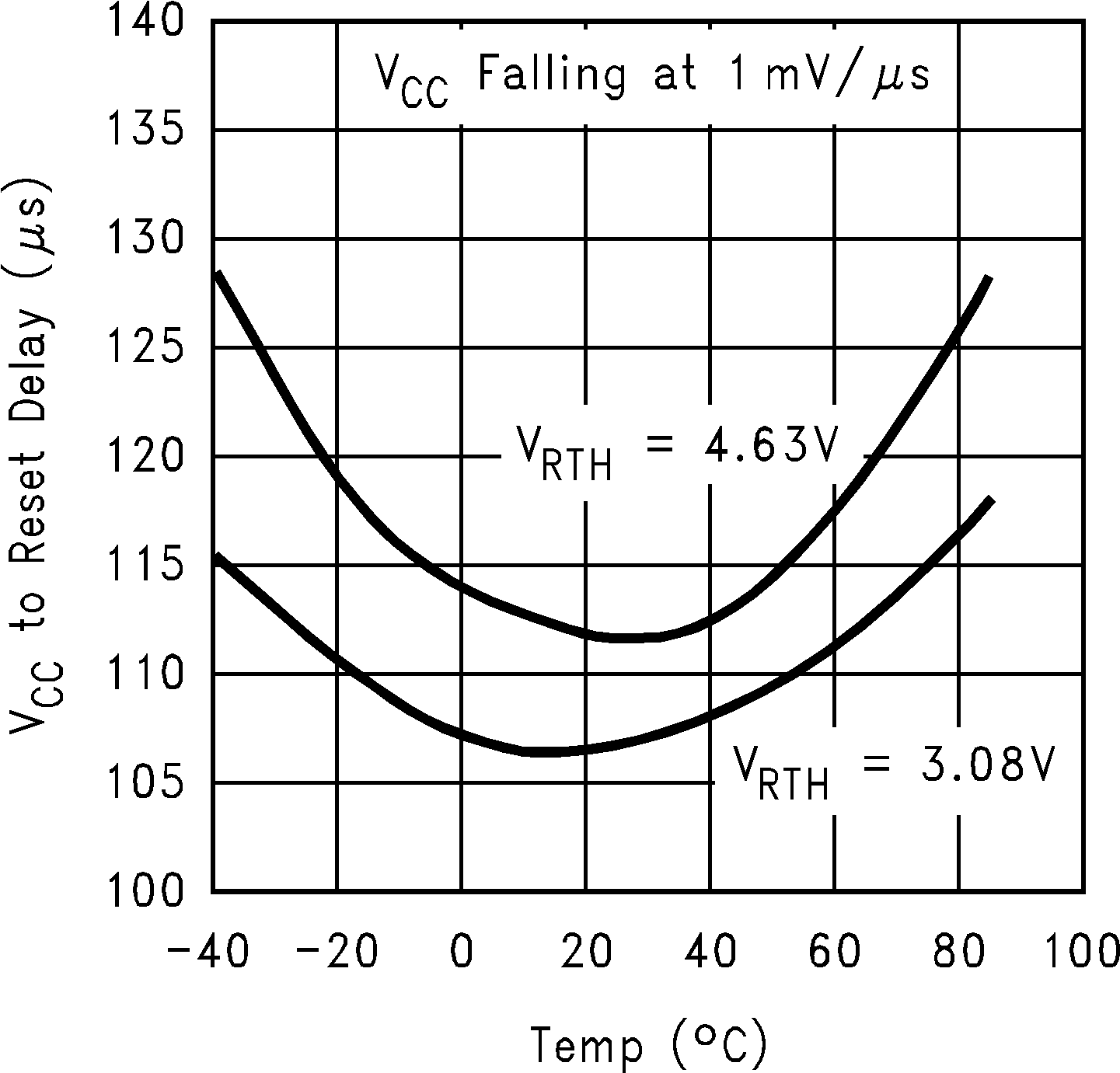 Figure 3. VCC to Reset Delay vs Temperature
Figure 3. VCC to Reset Delay vs Temperature
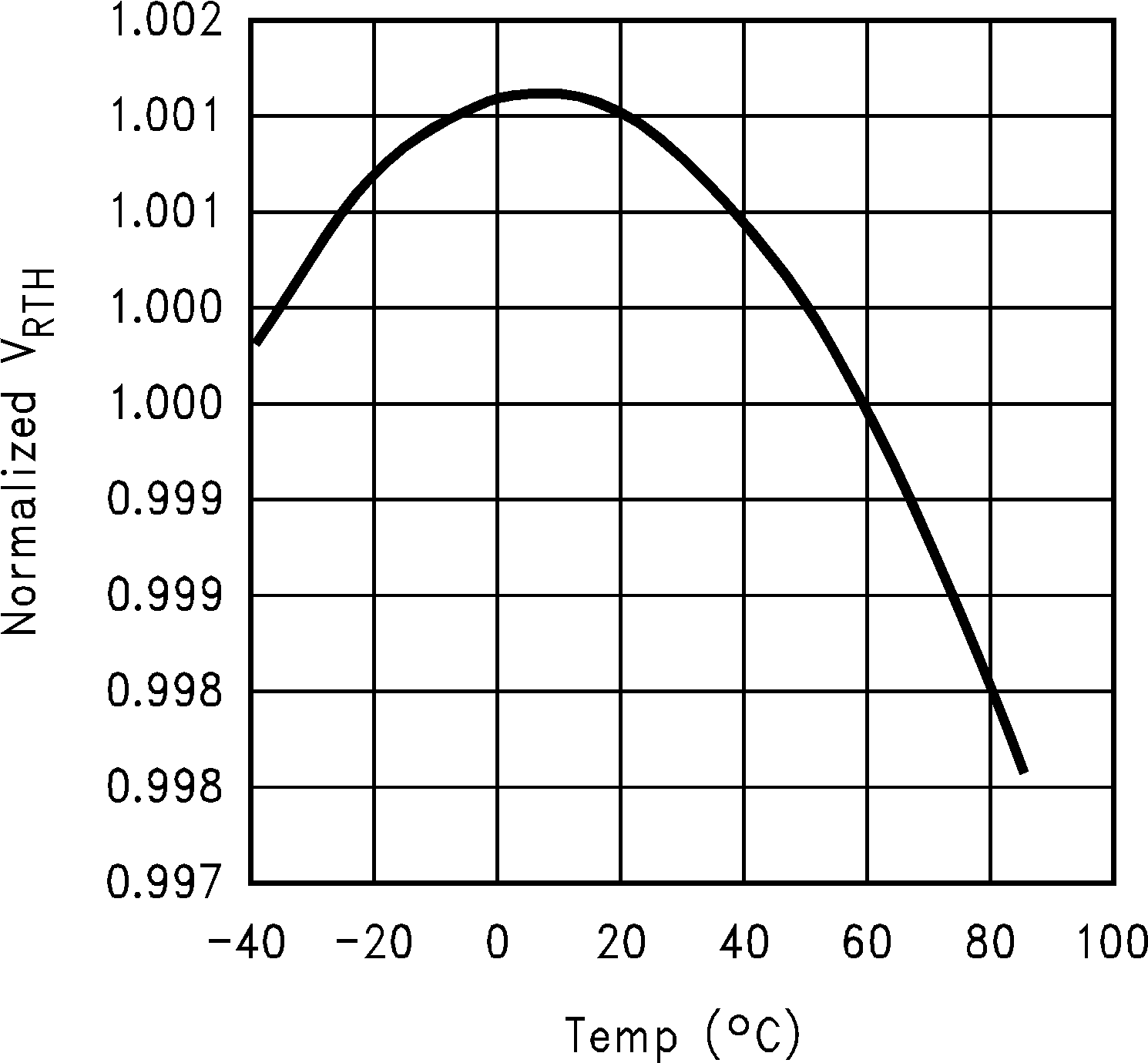
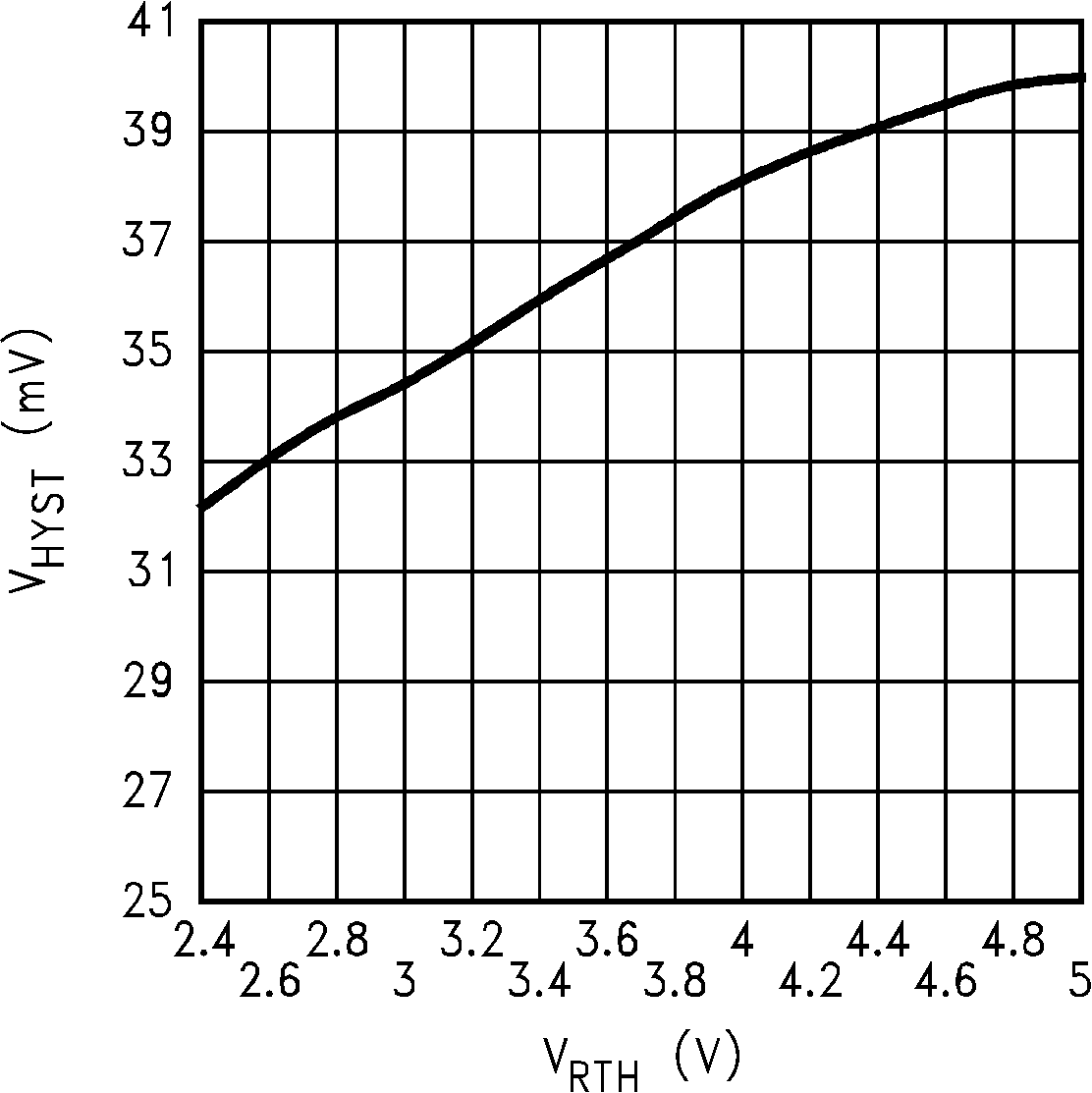
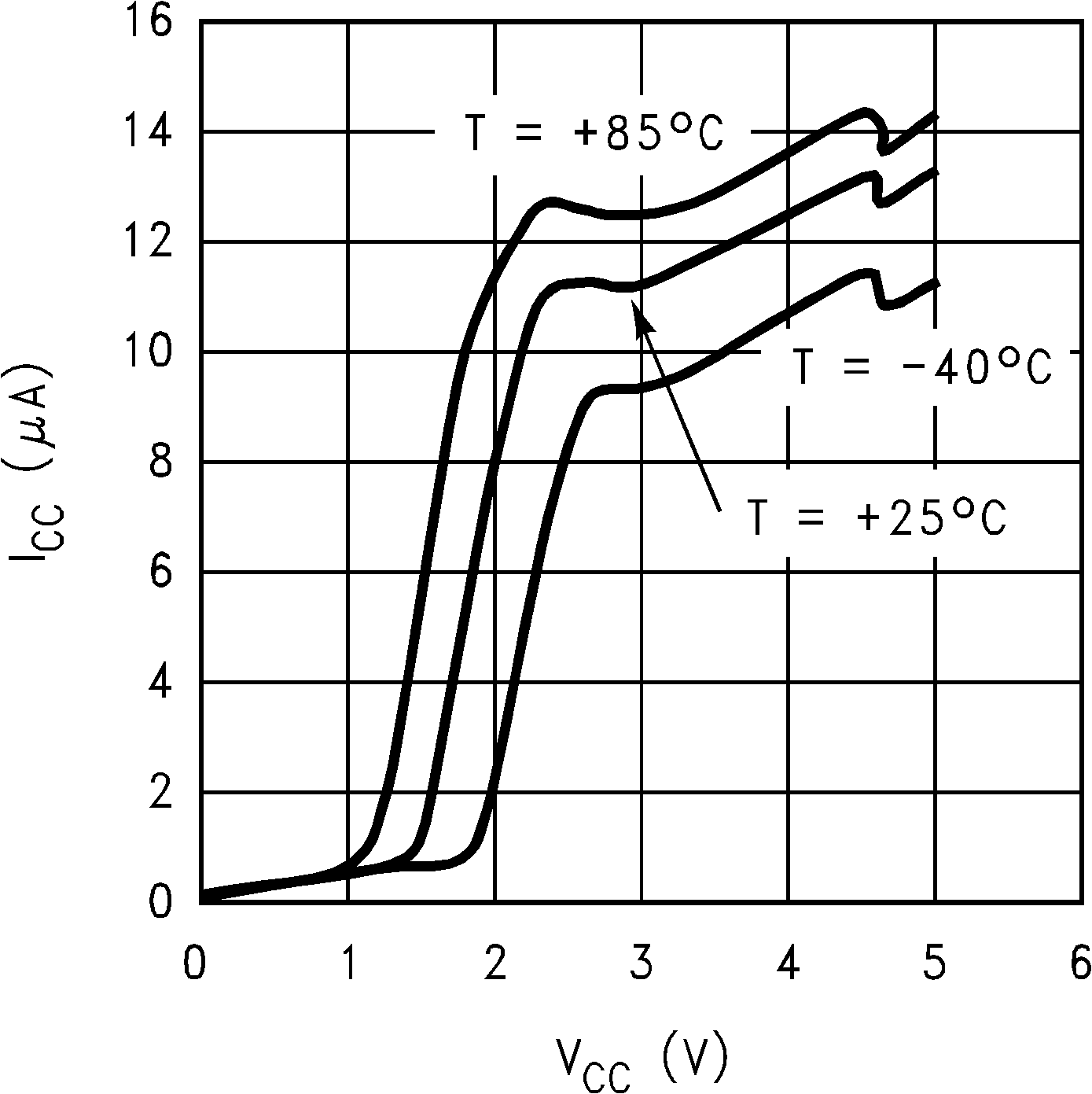 Figure 2. ICC vs VCC
Figure 2. ICC vs VCC
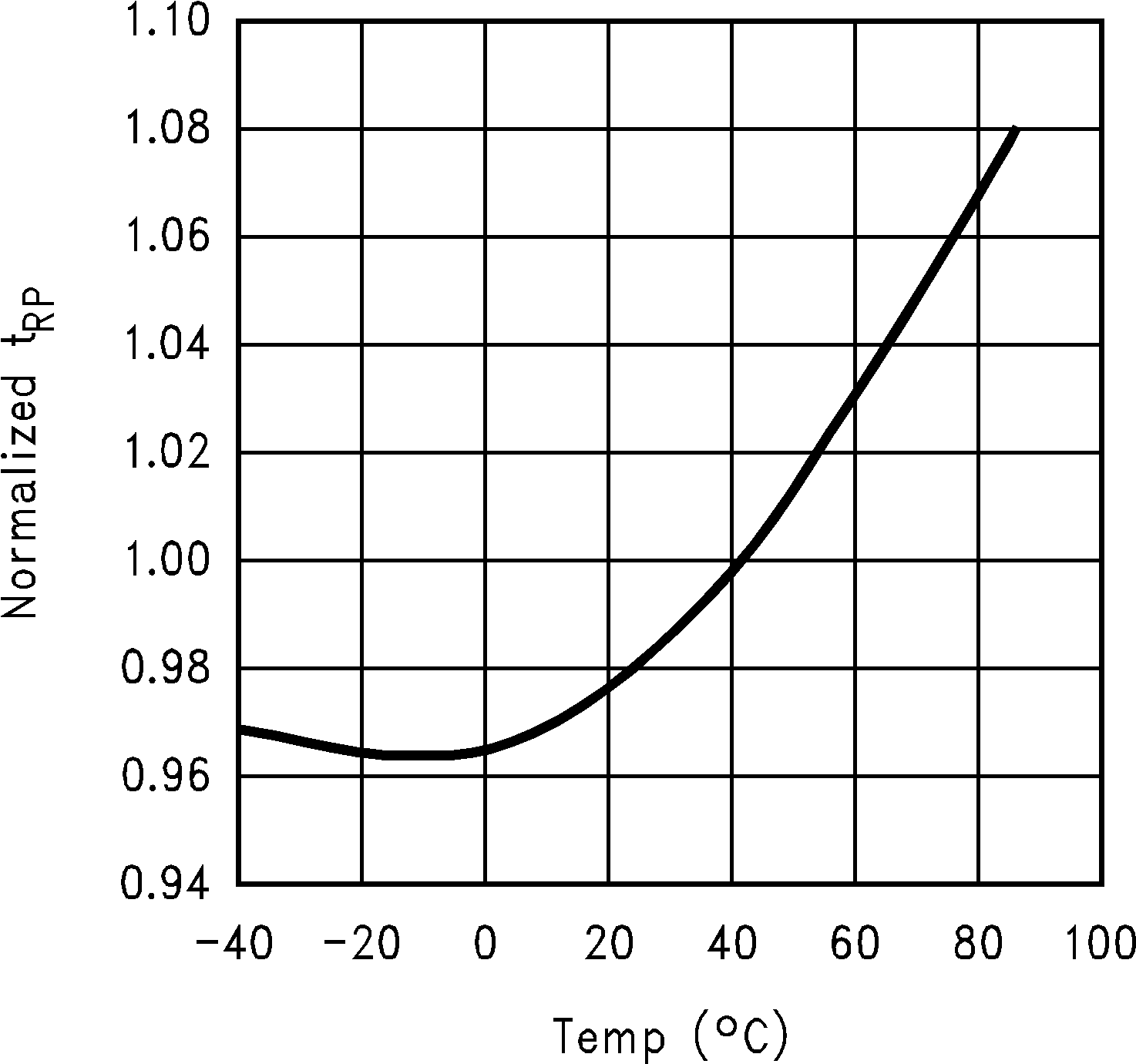 Figure 4. Normalized tRP vs Temperature
Figure 4. Normalized tRP vs Temperature
